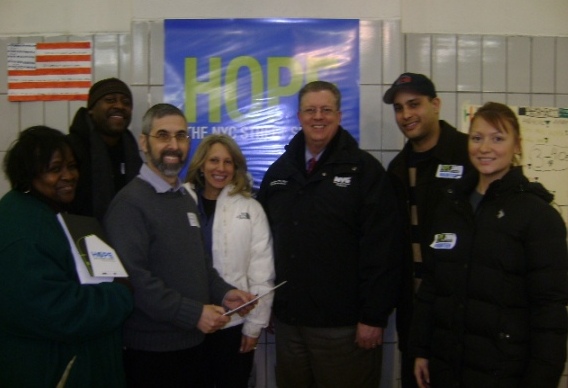News
Honing Social Work Skills in the Cold
Students From Touro College’s Graduate School of Social Work Take Part In NYC Homeless Outreach Population Estimate (HOPE)

New York, N.Y. - Braving sub-freezing temperatures, about a dozen students and professors from the Graduate School of Social Work at Touro College recently joined forces with nearly 2,500 volunteers to help count the number of people currently living unsheltered in the city.
The Touro volunteers were part of a group that ventured out after midnight to canvass parks, subways and other public spaces as part of the New York City Department of Homeless Services’ (DHS) Homeless Outreach Population Estimate (HOPE).
The information gathered by HOPE volunteers will be critical to the DHS’s ongoing efforts to help homeless people leave the streets for a better life.
“It was a very moving experience,'' said professor Elhanon Marvit, MSW, LCSW, coordinator of the Brooklyn Division, Graduate School of Social Work at Touro College. Professor Marvit participated in the canvassing with his colleague, professor Allison Bobick, MSW, LCSW, director of student advancement.
“It was very cold, with temperatures in the teens, and while our focus was on conducting the survey, students were able to hone their social work skills by trying to get as many homeless people off the streets as possible,” Professor Marvit added. He said that DHS provided vans to help transport any homeless individuals to shelters.
The Touro College volunteers canvassed an area of Lower Manhattan, including a subway station. Volunteers approached anyone they encountered on the street or subway platform and asked them survey questions about whether or not they had a place to stay that night. When volunteers did find a homeless person, they also passed out outreach cards printed with the phone number of the DHS and addresses and directions to intake and drop-in centers across the city, in addition to offering transportation by van to various homeless shelters.
To increase public accountability and continually evaluate and improve the programming designed to help street homeless New Yorkers, DHS began surveying parts of the city in 2003, and has conducted the count citywide every year since 2005.
“The Homeless Outreach Population Estimate will help us better understand the gravity of the situation so that we can begin to develop solutions to the problem,” Professor Marvit said.

